One Particular Theory
The techniques used for the construction of the Egyptian pyramids have become a controversial matter for both archeologists and historians. These professionals have dedicated their entire careers to unveil the secrets hidden behind these ancient structures, and many have come up with several theories. It is believed that the techniques have developed over time; later pyramids were not constructed in the same way as earlier ones.
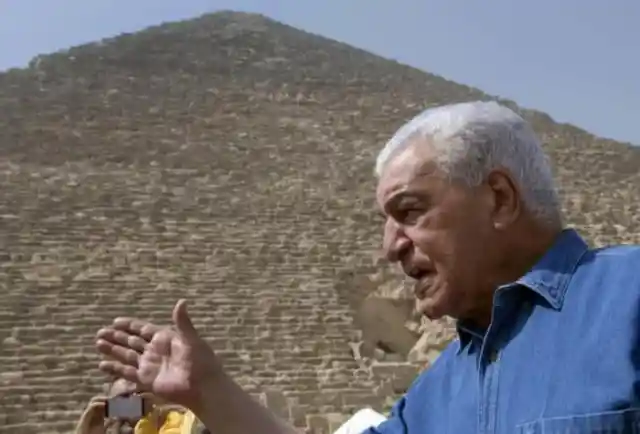
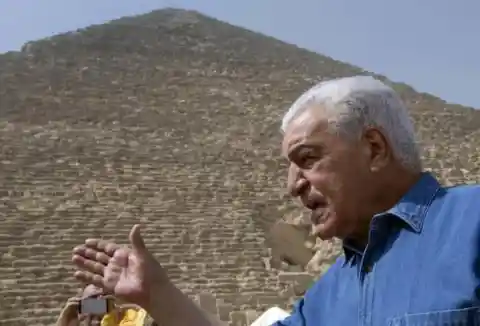
The pyramids are mainly made of stone, so how did they manage back then to move and place the stones to create the triangular shape? The majority believe that the stones were carved with copper chisels, and then, they were rolled or dragged and lifted into position.
Different Theories
The Greeks believed that the pyramids were built by slaves under forced labor for many years, and such a theory of how they were built was widely accepted. However, archaeologists now suggest that these structures were built by tens of thousands of skilled and experienced workers. They would camp near the pyramids and work for a salary or as a form of tax payment until the construction was finished. Even workers’ cemeteries were discovered in 1990.
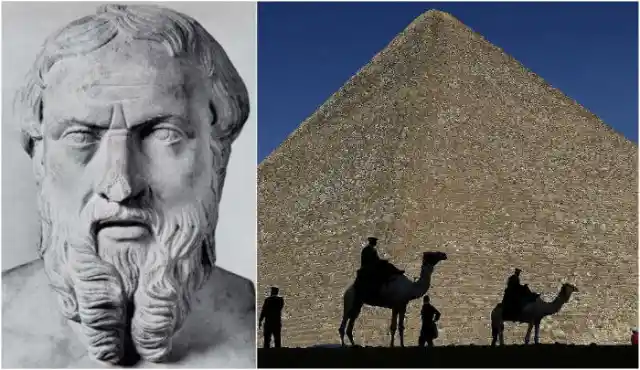
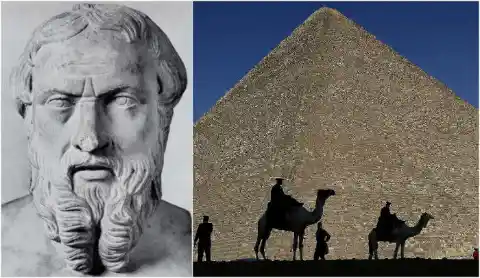
Two historians wrote the first accounts on the construction of the pyramids: Herodotus and Diodorus Siculus. These accounts came centuries after the era of the pyramid construction by Herodotus in the 5th century BC and Diodorus Siculus in the 1st century BC. Herodotus was even acclaimed for his futuristic thinking. What were the contents of his account? Keep reading to find out.
An Irrefutable Theory?
Herodotus’s account dates about 1,600 years after the construction of the pyramids took place. As old as they may seem, his documents are still considered to be among the most accurate and realistic pieces of information on the entire subject. Herodotus was certain that the upper part of the pyramid was finished off first, then the next below it, and last of all the base and the lowest part.
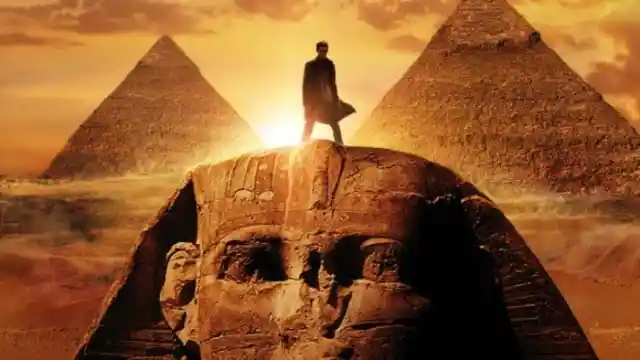
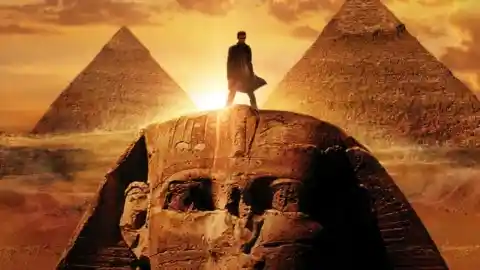
Herodotus also considered that pyramids were made like stairs. The workers would use short wooden logs as levers to raise the rest of the stones, and when the stone had been raised, it was set on another lever that stood on the first tier, and the lever again used to lift it from this tier to the next. However, in recent years, historians have become skeptical about Herodotus’ accounts, for they believe that his writings only tell one side of the story. So, what happens next?
Consensus Achieved
Historians and Egyptologists reached a consensus about the construction of the pyramids. They concluded that in ancient Egyptian society, it was the Pharaohs who ordered the building of these structures. During an excavation, experts found a large number of inscriptions marking the visits of Pharaohs to the quarry, indicating its importance in royal building projects.
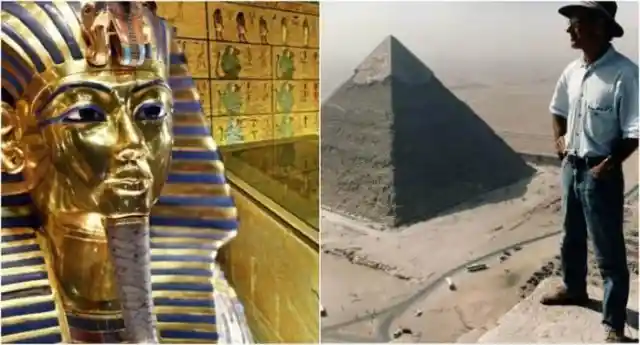
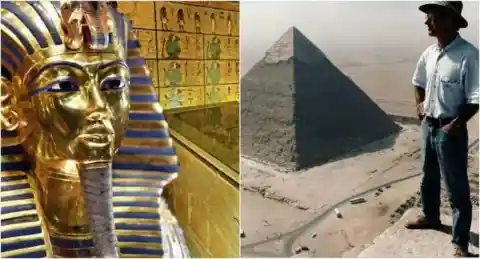
It is believed that the most experienced engineers and architects were chosen to undertake the task. At the same time, historians and scientists agree that forced laborers also were used to putting this monumental task into action. What is more, there has been a consensus about the method workers used to help build the pyramids altogether. Can you guess what it was?
Concrete Blocks
Existing theories are endless, but all of them have something in common: the construction method. It is presumed that the cutting tools laborers used to carve out each boulder of the pyramids were copper chisels. Another unsolved mystery concerns the material that held the bricks of stone together. Until this day, no archaeologist has been able to properly identify the material that was used to make the motor that bonded the stones together.
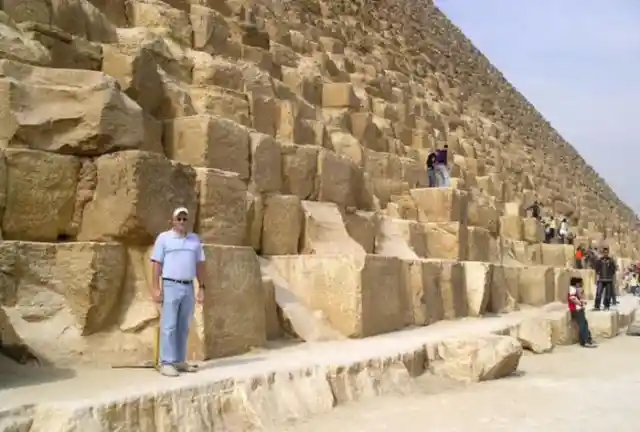
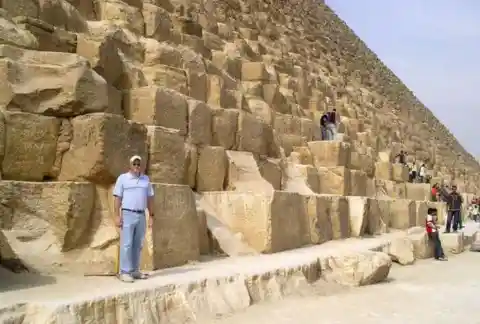
It is believed that the material needed to be harder than the stone in order for it to work. What about the way in which bricks were laid in place? Several theorists think that each stone brick was carried and dragged into its place. However, there is one question that historians have not found the answer yet: were those who struggled and toiled over the pyramids really Egyptian workers?
Extraterrestrial Help?
If you have not heard about the popular television show on History Channel _Ancient Aliens_, you are really out of this world. The program presents hypotheses of ancient astronauts and proposes that there is evidence of past human-extraterrestrial contact. Giorgia A. Tsoukalos, the man with the crazy hair starring the famous show, strongly believes that extraterrestrial beings actually interacted with humans.


What is more, he believes that aliens played a very important role in the construction of the pyramids. Those who believe in this theory state that the pyramids are aligned with Orion’s Belt. Nonetheless, this theory has been deemed as unconventional, and both historians and scientists have discredited it.
Hebrew Slaves
The mystery of who built the pyramids can even be dated back to Biblical times. The enslavement of the people of Israel in Egypt is mentioned in the Bible, especially in the book of Exodus. Therefore, it is logical to assume that the ancient Israelites were the actual builders of these triangular structures.


However, historians regard such an assumption as a misconception. Archeologists estimate that the Egyptian pyramids were built around 2580 BC, while the Israelites were not under slavery until the thirteenth century, that is to say from 1300 to 1201 BC.
The Mystery Behind The Sphinx
The Sphinx is the famous structure of a limestone statue of a reclining sphinx, a mythical creature with the body of a lion and the head of a human located in Giza. It is the oldest known monumental sculpture in Egypt. Even though there is a large amount of evidence suggesting that the pyramids were constructed by the ancient Egyptians, some believe that they may have been built far before the time the Pharaohs were alive.
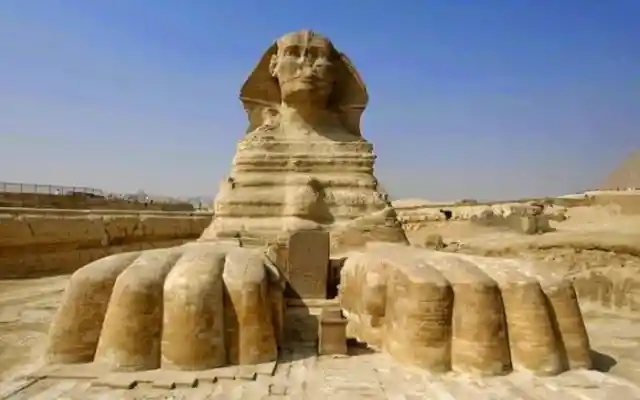
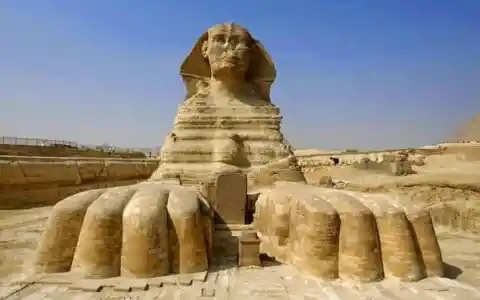
The idea that the Sphinx was created by being carved out of natural rocks and boulders has been argued by Malcolm Hutton and Gerry Cannon. Gerry Cannon stated the following: “_You can’t carve a rock when it’s under the sand. When it was not under the sand was about 12,000 years ago, and the Egyptians weren’t there_.”
Who Built It?
Let’s suppose that the theory that the Egyptians did not actually build the structure of the mythical creature is true. It would mean that the Sphinx is allegedly much older than historians and archaeologists have concluded. Cannon went on, saying, “_Nobody knows who was there 12,000 years ago. It had to have been done by a civilization that was more advanced than any of us_.”
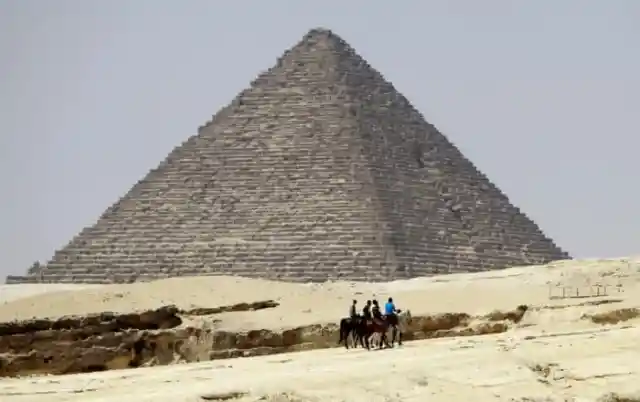

The theory held by Malcolm Hutton and Gerry Cannon is quite out of the ordinary. Many archeologists and Egyptian authorities shut down this theory, as others are far more credible. It is commonly believed that the Sphinx was actually built by ancient Egyptians of the Old Kingdom during the reign of the pharaoh Khafre.
A Pyramid Inside Another Pyramid
One of the most respected historians and archaeologists of Ancient Egypt is Miroslav Verner. This Czech egyptologist created a theory stating that the construction of the pyramids took more than 100,000 men. Those men were divided into a hierarchy in order to complete said construction.
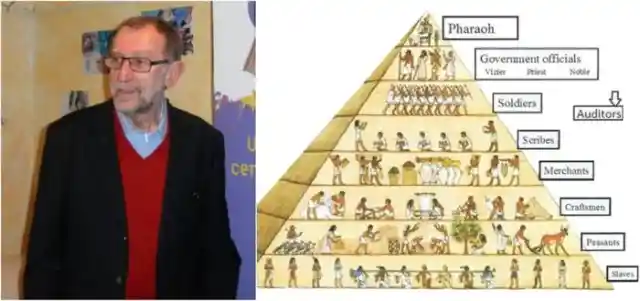
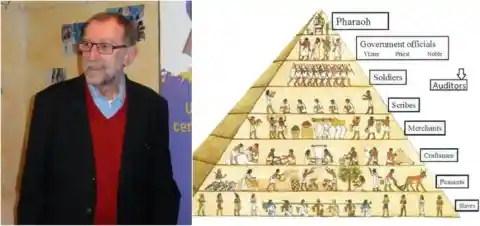
He further stated that men were distributed into different teams according to their skills and were then divided into different teams related to their individual skills. In other words, he suggested workers were organized as a pyramid and that it was that pyramid of people who accomplished the building of the actual pyramids.
A Master Plan
Other Egyptologists have also agreed with the theory of how the pyramids were constructed and have proposed similar theories. The British Egyptologist, historian, and archaeologist John Romer has agreed on the concept that the planning of the pyramids demanded precise blueprints before its construction. What is more, Romer took this theory one step further.
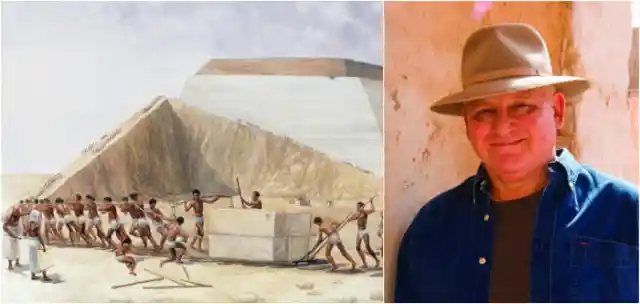
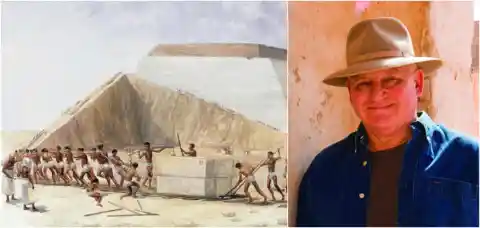
John Romer claims that a life-sized plan must have been created in advance. He has further stated, “_such a working diagram would also serve to generate the architecture of the pyramid with precision unmatched by any other means_.” In addition, he has estimated that the Egyptians may have taken around 15 years to develop this plan.
A Detailed Theory
Among the most influential Egyptologists of the modern era, we can find Mark Lehner. With more than 30 years of experience excavating in Egypt, Lehner has spent his career developing one of the most detailed theories to have ever been formulated. What is more, he is the one who introduced some very fascinating theories revolving around the pyramids.
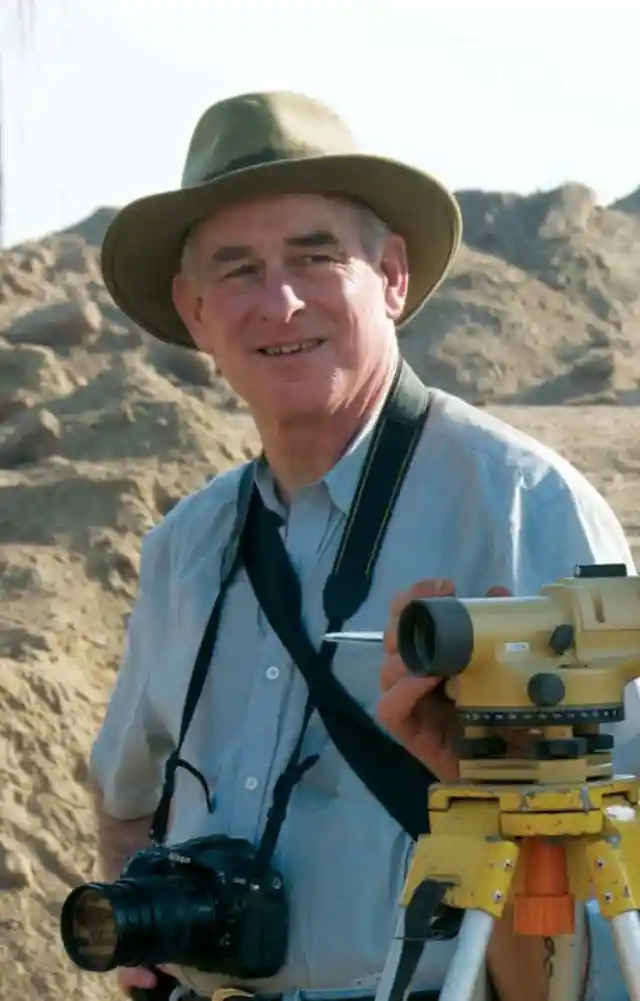
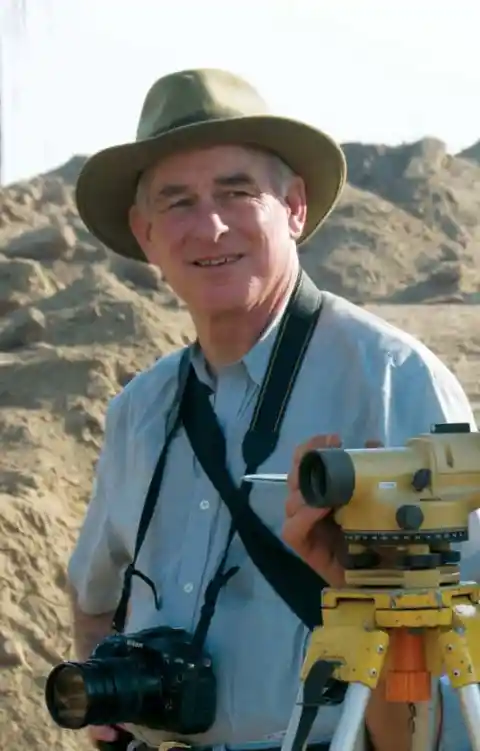
Lehner does not see eye to eye with Miroslav Verner. He disregards the theory that the construction took 100,000 men. Instead, he considers that the number of those who were involved in the construction ranged between 15,000 to 40,000. At the beginning of his research, he never imagined how influential his theory would become.
A Wooden Boat
In 1954, an Egyptian archeologist named Kamal el-Mallakh discovered a boat along with his team. They have the hypothesis that such a boat could have been used by Pharaoh Khufu. This was the initial catalyst that triggered this onslaught of evidence. What they discovered was only the remains of the boat: wooden planks.
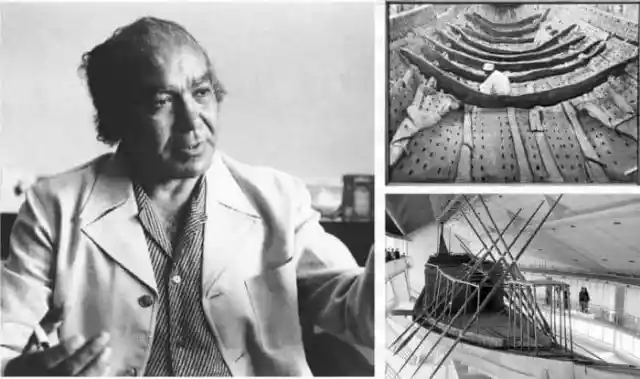
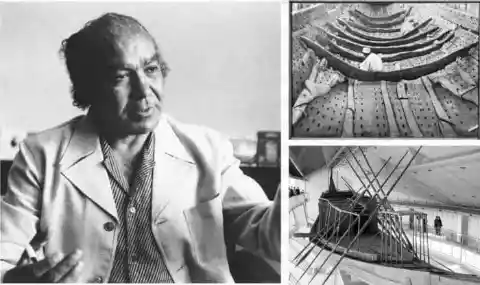
The remainings were restored in order to determine where they came from. Then, those wooden planks were scanned. The results demonstrated that the wooden planks could have been sewn to one another. Nonetheless, there was a question everyone had: what was the purpose of the boat and did it ever take a trip on the Nile?
An Afterlife Journey
Khufu’s ship is one of the oldest, largest and best-preserved vessels from antiquity. Many archeologists believe that the ship was completely sealed in 2500 BC. That job was carried out by servants, and the boat was then placed in a pit located inside the Great Pyramid. The ship was built for Pharaoh Khufu, who would use it in his afterlife.
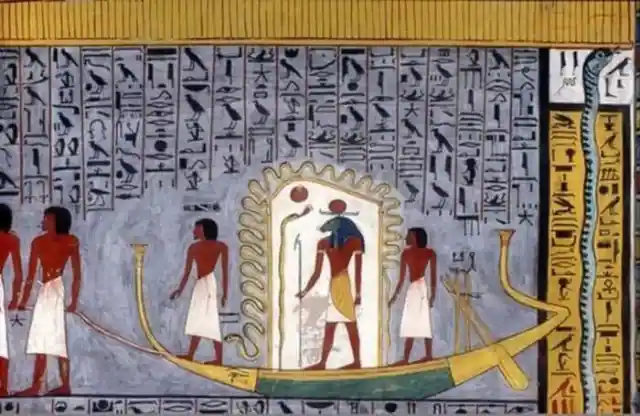
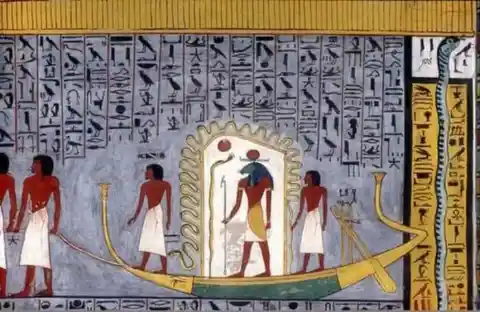
This idea was widely accepted in Egyptian society. It is believed that the ship was designed to lead the king on his eternal journey with the Egyptian Sun God named Ra. Though this idea made sense to many, many theorists have another concept altogether.
The Purpose Of The Ship
Khufu’s ship was identified as the world’s oldest intact ship, and it was meant to be used by Pharaoh in his afterlife, but many theorists do not adhere to such idea since the ship had already been used to take a trip in the water. This evidence led historians to assume that the ship was used to transport the mummified body of the king, where he would rest. given that in the ship, there is no rigging.
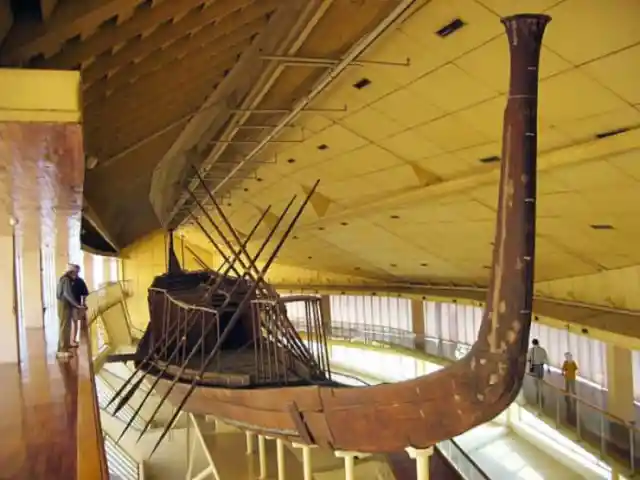
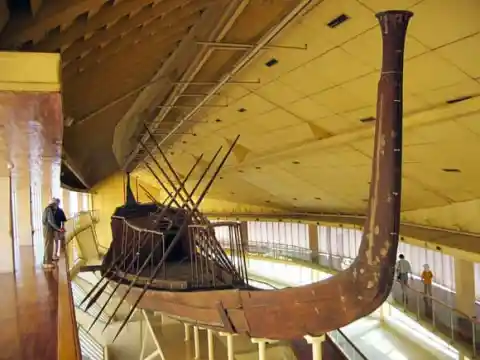
Other historians hold another theory, claiming that Pharaoh Khufu used the ship while he was alive so he could travel to holy, Ancient Egyptian sites. The ship has been described as “a masterpiece of woodcraft” that could sail today if put into water, either a lake or river.
What Were The Pyramids For?
Now that the different and complex theories about who built the pyramids have been unveiled, we can move on to another matter. Why were they even built in the first place? It seems that answering this question is key to keep solving the mystery behind the pyramids. According to most Egyptologists, the Great Pyramid was built with the purpose of housing the body and the possessions of Pharaoh Khufu.
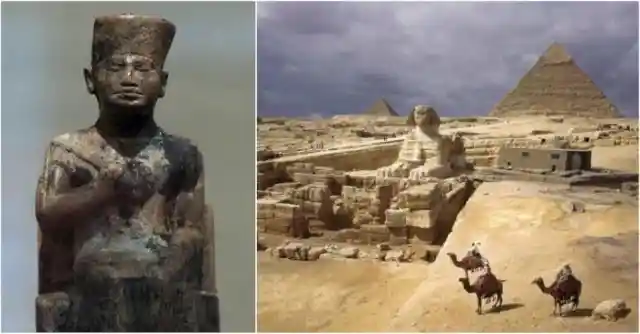
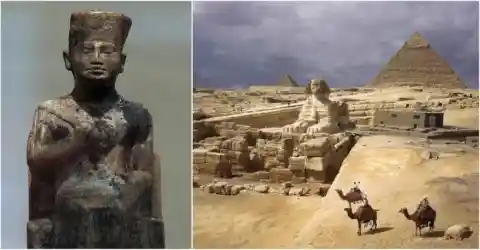
Historians believe that the pyramid not only served as a tomb for the pharaoh but also as a storage pit for different items he would need in the afterlife. Surrounding the Great Pyramid, there are other subsidiary pyramids said to be intended for Pharaoh Khufu’s wives. Although this theory has been widely accepted, there are other hypotheses regarding the purpose of the pyramids.
A Great Discovery
Many existing theories have been put into question recently when a major discovery about the inside of the Great Pyramid took place. In 2017, scientists from the ScanPyramids project using muon radiography discovered a large cavity, sort of like a void. They have to use three different technologies in order to determine the existence of this void: nuclear emulsion films, scintillator hodoscopes, and gas detectors.


The length of the void is at least 30 meters and it is located directly above the queen’s resting place. The purpose of the cavity is not known and neither is it accessible. However, this discovery gave rise to many theories about what the void may have been used for.
And The Void Means…
Those working on the scanning project wanted to have a better understanding of the pyramid’s structure and their construction processes and techniques. After the void was discovered, a controversy broke out among scientists. There are two main theories that oppose each other that can explain the purpose of the void.
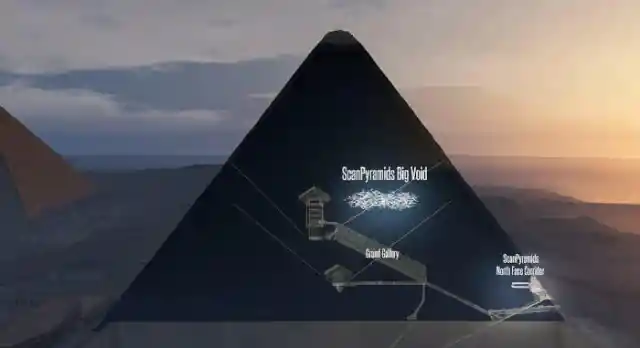
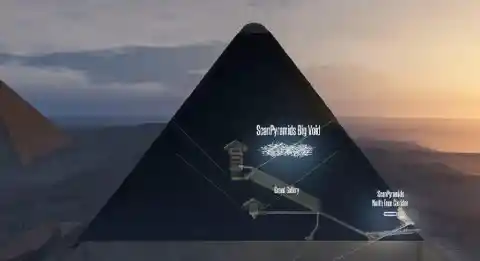
One of the theories claims that the void was merely built as a ‘construction gap’, which entailed that builders used it as a platform to cross from one room to another. The second theory states that this void was built to create a gap between the queen and the king’s chambers. This second theory could bear an additional meaning…
The Chambers
Even though they were built in ancient times, the Great Pyramids are considered to be very advanced structures. The existence of three chambers within the structure has been discovered. The lowest chamber is in the bedrock, and some Egyptologists suggest that it was intended to be the original burial chamber.
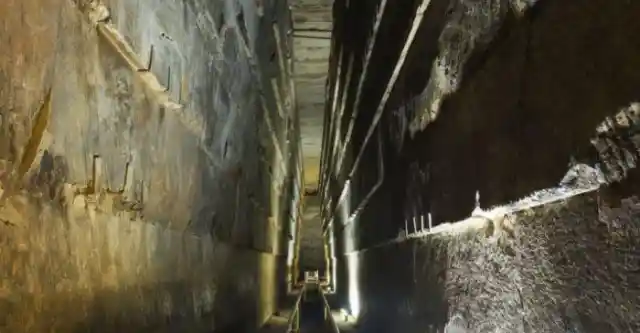
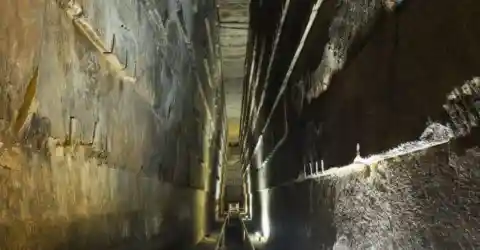
However, it is believed that Pharaoh Khufu later changed his mind and wanted it to be higher up in the pyramid. The king’s and queen’s chambers are located above the bedrock, and the exterior surrounds both chambers. There are two mortuary structures included in the pyramids of Giza that were meant to honor the Pharaoh. An additional pyramid surrounded entirely by tombs can be found in the area.
The River Or The Sun?
It would be logical to think that the pyramids were built close to the Nile because the longest river in Africa would be a great source of water supply for the civilizations. Besides the benefits of being close to the water, research carried out showed another reason why the structures were built there. It is because the sun sets on the west bank of the River Nile, and it was associated with the realm of the dead in Egyptian mythology.


The Egyptians believed that the dark area of the night sky around which the stars appear to revolve was the physical gateway into the heavens. The location of the pyramids was meant to become a symbol for the world of the dead. The pyramids actually had a white, polished layer of limestone covering them. This made them really hard to look at during the day due to how brightly they reflected sunlight and even moonlight.
Archaic Air Conditioning
Egyptian society was ancient but not old-fashioned. Years of research demonstrated that this society had a futuristic vision, which is reflected in the way in which the pyramids were constructed. Two examples help us prove this theory. First of all, archeologists found out that the builders set up a system to prevent the structure from suffering damages from earthquakes by using a ball and a socket.
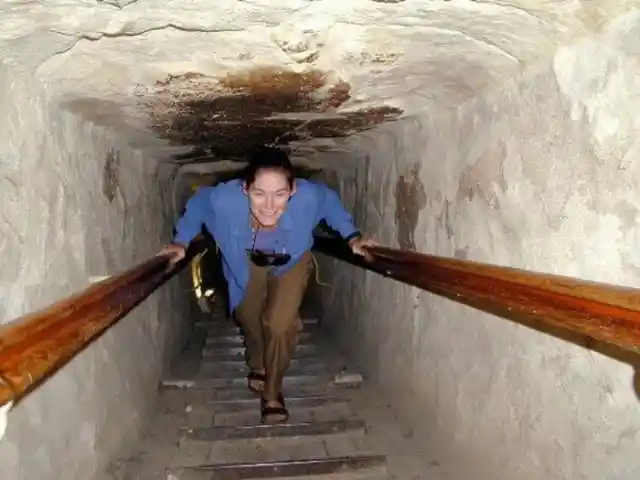
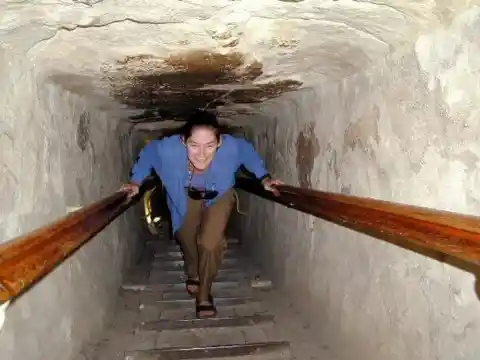
Secondly, the Egyptian pyramids were designed in such a way so as to completely block the harsh heat while the inside remained with a temperature of 20°C, approximately. What is more, another major discovery was made in 2013 that helps prove some of the theories of some historians and even change the minds of others.
Written Evidence
A papyrus made approximately 4,500 years ago was discovered in Wadi al-Jarf. This document was a text of hieroglyphics that seemed to outline the plans for the construction of the pyramids. Before, such plans were held as pure theory, but now archeologists can confirm them as a fact. Who made this historic discovery?
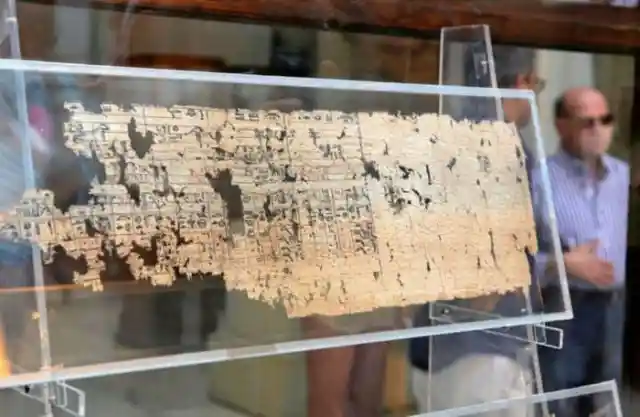
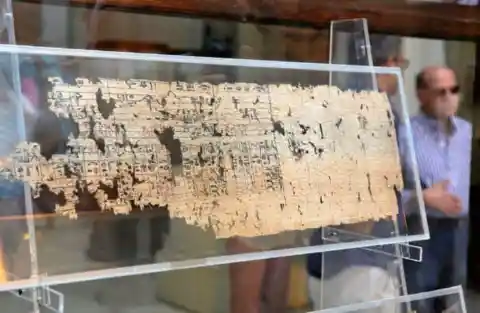
It was Pierre Tallet who discovered the long theorized papyrus, and ever since, he has been working to decipher the hieroglyphics on the papyrus. Tallet stated, “_Since the very day of the discovery, it was quite evident that we have the oldest papyrus ever found in the world_.” He was aware that he had changed Egyptology forever with his astonishing discovery. So what was written on the papyrus?
The Contents Of The Papyrus
The writer of this document was Mere, an ancient Egyptian citizen. The document confirmed those theories, which stated that the pyramids were built by skilled workers and engineers. It has also been revealed that these workers used boats as a means of transportation for the limestone that weighed more than 170,000 tons. The stones made the journey on the Nile from Tura to Giza, where the pyramids stood.
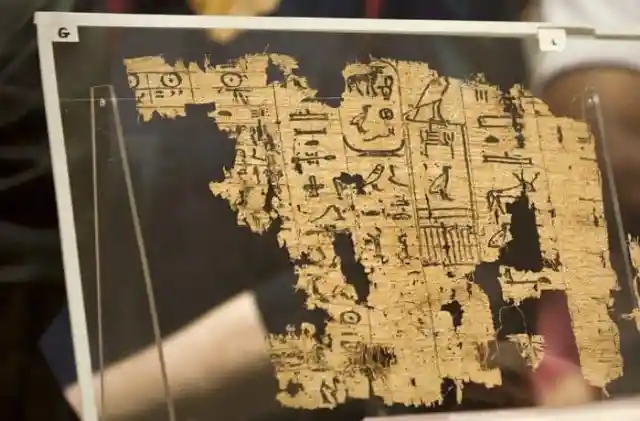
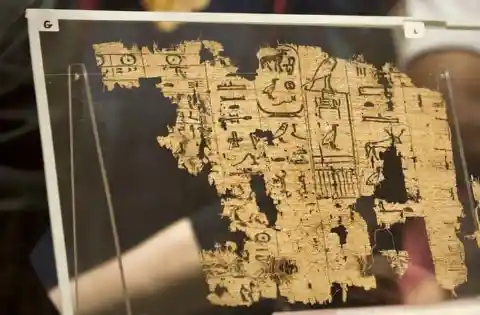
It also gave one more detail that made the pyramids even more staggering than once thought. The papyrus revealed that engineers constructed man-made canals to make it easier to transport building materials. The canals started directly at the Nile and stretched to the area where the pyramids were built.
An Undeniable Tourist Attraction
The Great Pyramid is regarded as being the last surviving Wonder of the World. There are 7 in total, and the remaining wonders that have unfortunately been lost to the hands of time include the Lighthouse of Alexandria, Colossus of Rhodes, the Mausoleum of Halicarnassus, the Olympic statue of Zeus, the Temple of Artemis, and the Hanging Gardens of Babylon.
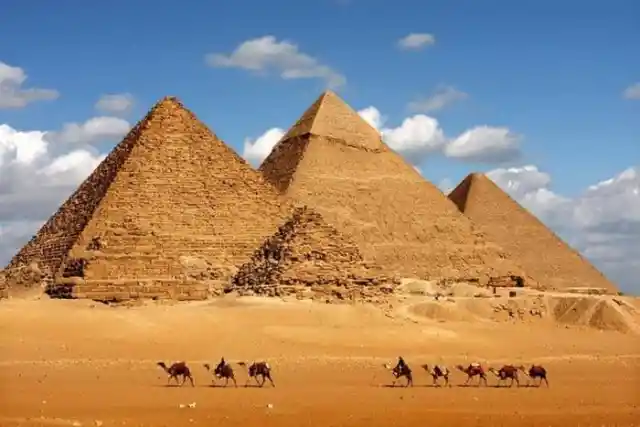
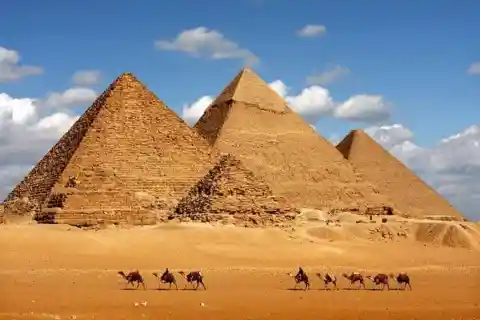
No matter what theory you believe in, there is an undeniable fact: no tourist can resist the appeal of the pyramids. You don’t have to be a highly respected Egyptologist that studies the pyramids for a living to be interested in their history. Their ancient history and the mysteries surrounding them explain why over 5 million visitors every year flock to Egypt to see the monuments for themselves.